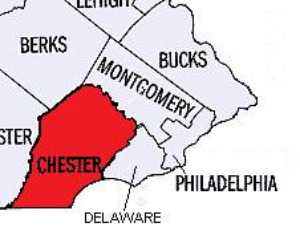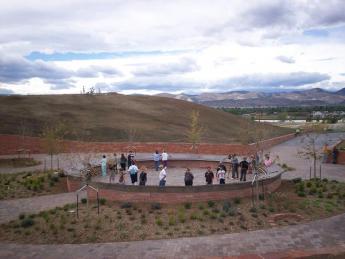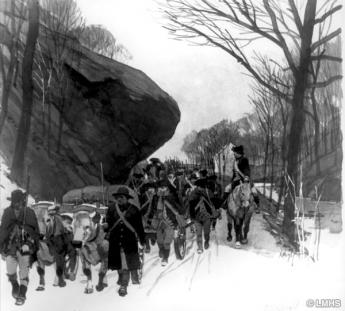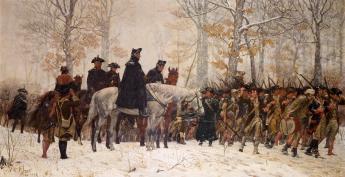Related Topics
The British Attack Philadelphia
Fighting in the Revolutionary War lasted eight years; for two years (June 1776 to June 1778) Philadelphia was the main military objective of the British.
Montgomery and Bucks Counties
The Philadelphia metropolitan region has five Pennsylvania counties, four New Jersey counties, one northern county in the state of Delaware. Here are the four Pennsylvania suburban ones.
George Washington in Philadelphia
Philadelphia remains slightly miffed that Washington was so enthusiastic about moving the nation's capital next to his home on the Potomac. The fact remains that the era of Washington's eminence was Philadelphia's era; for thirty years Washington and Philadelphia dominated affairs.
Chester County, Pennsylvania
 Chester was an original county of Pennsylvania, one of the largest until Dauphin, Lancaster and Delaware counties were split off. Because the boundaries mainly did not follow rivers or other natural dividers, translating verbal boundaries into actual lines was highly contentious.
Chester was an original county of Pennsylvania, one of the largest until Dauphin, Lancaster and Delaware counties were split off. Because the boundaries mainly did not follow rivers or other natural dividers, translating verbal boundaries into actual lines was highly contentious.
Lumpers, Splitters and Technicians: The Framers of the American Constitution
 Half a dozen distinguished colonists came to believe the thirteen American colonies could not survive unless they banded together. Eight years of bitter experiences during the Revolutionary War had taught them they must unite. We might call them lumpers.
Half a dozen distinguished colonists came to believe the thirteen American colonies could not survive unless they banded together. Eight years of bitter experiences during the Revolutionary War had taught them they must unite. We might call them lumpers.
Rebel Hill
The Schuylkill River, hence Schuylkill Expressway and also Amtrak, all take a big bend westward about ten miles from Philadelphia. They are making a detour around a big hill or minor mountain, tending to position the sun in the eyes of many commuters at certain hours of the day. Real estate developers are apparently responsible for naming the place Rebel Hill, and it's getting pretty crowded with houses. The Rebel they had in mind was George Washington.

|
| Rebel Hill |
The father of our country was in retreat from the battle of Germantown, having crossed the river at Matson's Ford, then following Matsonford Road over and beyond the big hill, and pausing for water at the spring in the gulch formed by Gulch Creek, now more decorously called Gulph Creek. The creek tumbles down the side of a long ridge forming the south side of the Great Valley; the gulch or gulf is really a crevasse in that ridge, which in a sense makes Rebel Hill just a split-off extension of that ridge. Consequently, the gulch makes a water-level route from the Schuylkill to Valley Forge, which anyone would take to get there in a hurry. Valley Forge is a misleading term; it's a hill in the middle of the Great Valley, as the center of an angel food cake tin, and was thus defensible in all directions. The cleft in the southern ridge is where you would normally travel to get to the base of the bastion of Valley Forge.

|
| Old Gulph Road |
So, everyone still takes that route, following Montgomery Avenue after it turns into South Gulph Road, but before it turns into North Gulph Road. The road up along the southern ridge is called Old Gulph Road, while the newer extension from the river is called New Gulph Road. All of these winding roads are compressed within the narrow defile beside Gulph Creek, reachable by splashing through the fords in the creek, although that is discouraged after ice forms in the winter. And, yes, a new road has come in at a restored old farmhouse, called New Gulph Road. The restoration has created a fancy restaurant, which somehow forgets that at the time we are talking about, it was the headquarters of (Major) Aaron Burr. The giant highway cloverleaf ahead on South Gulph Road tends to obscure the fact that it was the direct road to Valley Forge, now further obscured by lots of shopping center. If you persist and keep a lookout for the street signs, you will eventually get to the Memorial Arch, log cabins and National Park Service facilities of Valley Forge.

|
| Valley Forge |
Back in the gulch, however, is the spring where Washington's troops refreshed their canteens. Just beyond it is a great big rock, much mentioned in memoirs of the episode. Around 1950, the highway engineers decided to blast this rock out of the way of widening a road that badly needs widening. The Daughters of the American Revolution saved the day. Creating a giant fuss, the DAR succeeded in limiting the engineers to chiseling the bottom of the rock away. A gentleman in his eighties recently remarked he had driven past that rock thousands of times, and always wondered what it was there for. Now he knows.
Originally published: Thursday, October 21, 2010; most-recently modified: Wednesday, July 31, 2019
| Posted by: John Hagan | Dec 29, 2016 2:58 AM |